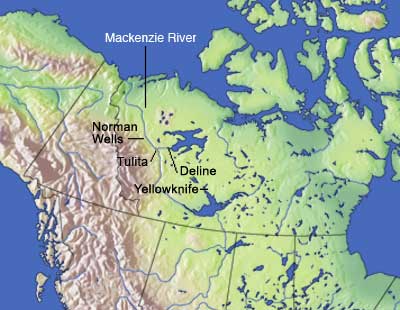 Map of area Dr. Jeff Wells is visiting |
On Sunday (8/14), I leave for a five-day fact-finding exploration of the Northwest Territory’s Mackenzie Valley. The Mackenzie River, Canada’s longest, flows 1,800 kilometers from Great Slave Lake north to the Beaufort Sea. Its watershed, which covers 20% of Canada, is located in the heart of the Boreal and encompasses more than 10% of the total North American breeding range of more than 100 bird species including birds as varied as Lesser Scaup, Short-billed Dowitcher, Northern Shrike, and Cape May Warbler.
The Mackenzie Watershed is home to six officially recognized Important Bird Areas. The region regularly hosts 1% or more of many waterfowl and shorebird species including up to 10% of the global population of Lesser Snow Goose and 20% of Black Brant. Thousands of Tundra Swans stage in the watershed many of which have been found, through satellite tracking, to migrate through and winter in the mid-Atlantic state of the eastern U.S.
Like all of the Boreal, the Mackenzie Valley is at a crossroads. Still largely unspoiled, a plan is now under consideration to build an 800-mile gas pipeline through the Valley and across lands under the control of several indigenous First Nations groups. The pipeline will undoubtedly change the social and ecological framework of the area forever. The peoples of Canada and the Northwest Territories must decide how best to maintain the lives and natural heritage that they cherish within the context of industrial development like the pipeline.
We will be visiting many of the areas that will be impacted by the proposed pipeline including Deline, Tulita and Norman Wells from our jumping off point of Yellowknife and will be meeting with leaders of First Nations groups, biologists, and others to learn more about the issue and the process.
Of course, I will be surveying the birds at all of our locations to get a better understanding of the species that frequent the region as they begin their journey south towards the U.S. I will write more about the trip and what we found over the next few weeks.
Jeff Wells
Senior Scientist
Boreal Songbird Initiative

